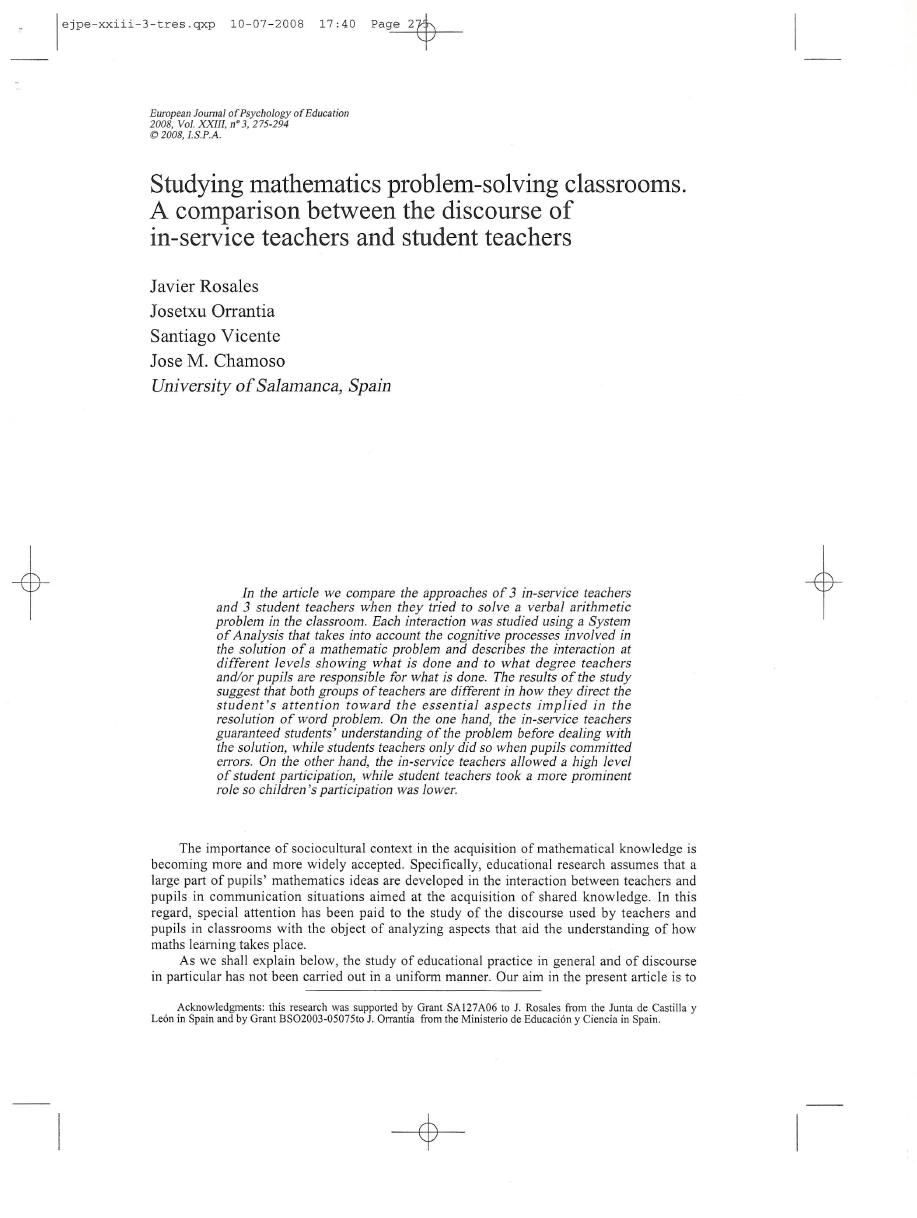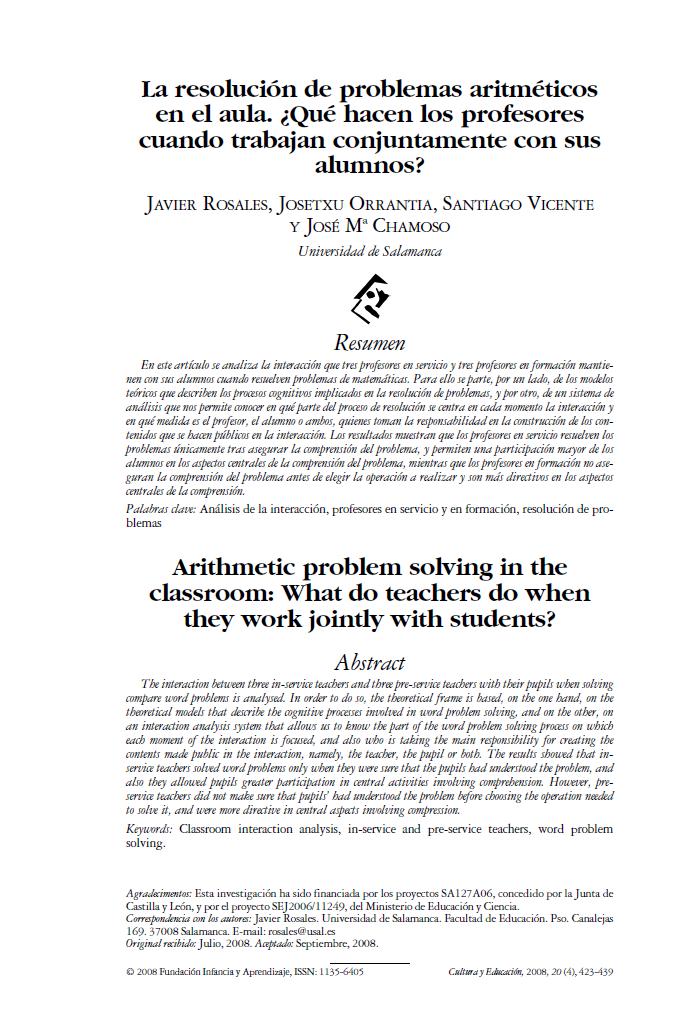Publicacions científiques
-
Qué, Cómo y Quien: Tres dimensiones para analizar la práctica educativa

Sánchez, E.; García, J.R.; Castellano, N.; De Sixte, R.; Bustos, A.; García-Rodicio, H.
(2008).ArticleCultura y Educación. Num.1
Vol. 20
Pág. 95-118 -
Can Differences in the Ability to Recognize Words Cease to Have and Effect Under Certain Reading Conditions?
Sánchez, E.; García, J. R.; Gonzalez, A. J.
(2008).ArticleJournal of Learning Disabilities. Num.4
Vol. 40
Pág. 290-306 -
The use of modality in the design of verbal aids in computer-based learning environments
Sánchez, E.; García-Rodicio, H.
(2008).ArticleInteracting with Computers.
Vol. 20
Pág. 545-561 -
La universalización de las competencias culturales
Sánchez, E.
(2008).ArticleCuadernos de Pedagogía.
Vol. 370
Pág. 82-86 -
Studying mathematics problem-solving classrooms. A comparison between the discourse of in-service teachers and student teachers

Rosales, J.; Orrantia, J.; Vicente, S.; Chamoso, J. M.
(2008).ArticleEuropean Journal of Psychology of Education. Num.3
Vol. 32
Pág. 275-294 -
La resolución de problemas aritméticos en el aula. ¿Qué hacen los profesores cuando trabajan conjuntamente con sus alumnos?

Rosales, J.; Orrantia, J.; Vicente, S.; Chamoso, J. M.
(2008).ArticleCultura & Educación. Num.4
Vol. 20
Pág. 423-439 -
R34D1NG W0RD5 W1TH NUMB3R5
Perea, M.; Duñabeitia, J.A.; Carreiras, M.
(2008).ArticleJournal of Experimental Psychology: Human Perception and Performance.
Vol. 34
Pág. 237-241 -
Masked associative/semantic priming effects across languages with highly proficient bilinguals
Perea, M.; Duñabeitia, J.A.; Carreiras, M.
(2008).ArticleJournal of Memory and Language.
Vol. 58
Pág. 916-930 -
Lexical competition is enhanced in the left hemisphere: Evidence from different types of orthographic neighbors
Perea, M.; Acha, J.; Fraga, I.
(2008).ArticleBrain and Language.
Vol. 105
Pág. 199-210 -
Transposed-letter similarity effects in naming pseudowords: Evidence from children and adults
Perea, M.; Estévez, A
(2008).ArticleEuropean Journal of Cognitive Psychology.
Vol. 20
Pág. 33-46






